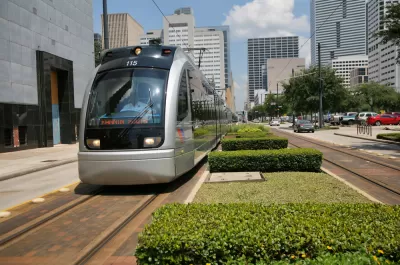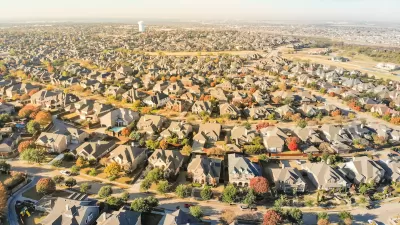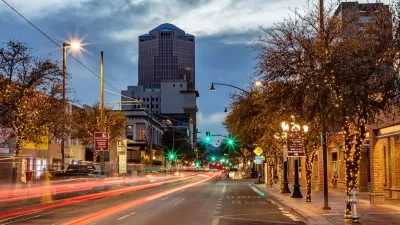After a three quarters of a century of building to accommodate cars and not people, it's going to take big changes to get the transit system the United States needs, argues a Next City editorial.

As people around the country protest highway expansions, it seems to Adie Tomer and Jeffery Gutman (authors of a recent op-ed in Next City) that the time when, "Transportation engineers and planners designed transportation networks with seemingly one goal in mind: to move vehicles as quickly as possible," has come to an end. As people and planners come to value walkability and access, transit will have to change. "These trends signal a transition away from an outdated model focused on moving vehicles to a new approach focused on getting people where they want to go," the Next City piece argues.
But, wishing doesn't make it so.
Tomer and Gutman caution that it will take changes not just to our buses or trains, but to the systems that we use to build, evaluate and maintain our transportation infrastructure. " Maximizing access will also require new frameworks to govern the built environment." Upsetting the current state of things means a lot of educating, negotiating and upsetting those that are invested in the old ways of doing things. "Formal guidebooks must be revised to reflect updated thinking. Political battles must be waged with actors looking to maintain the status quo, including developers who’ve already invested in land on the urban fringe." Still, the authors say, the need is real and many Americans have already demonstrated an appetite for this change, the work can be done, but it won't be easy.
FULL STORY: Why It Will Take More Than Light Rail to Fix U.S. Transit

Alabama: Trump Terminates Settlements for Black Communities Harmed By Raw Sewage
Trump deemed the landmark civil rights agreement “illegal DEI and environmental justice policy.”

Planetizen Federal Action Tracker
A weekly monitor of how Trump’s orders and actions are impacting planners and planning in America.

The 120 Year Old Tiny Home Villages That Sheltered San Francisco’s Earthquake Refugees
More than a century ago, San Francisco mobilized to house thousands of residents displaced by the 1906 earthquake. Could their strategy offer a model for the present?

Opinion: California’s SB 79 Would Improve Housing Affordability and Transit Access
A proposed bill would legalize transit-oriented development statewide.

Record Temperatures Prompt Push for Environmental Justice Bills
Nevada legislators are proposing laws that would mandate heat mitigation measures to protect residents from the impacts of extreme heat.

Downtown Pittsburgh Set to Gain 1,300 New Housing Units
Pittsburgh’s office buildings, many of which date back to the early 20th century, are prime candidates for conversion to housing.
Urban Design for Planners 1: Software Tools
This six-course series explores essential urban design concepts using open source software and equips planners with the tools they need to participate fully in the urban design process.
Planning for Universal Design
Learn the tools for implementing Universal Design in planning regulations.
Clanton & Associates, Inc.
Jessamine County Fiscal Court
Institute for Housing and Urban Development Studies (IHS)
City of Grandview
Harvard GSD Executive Education
Toledo-Lucas County Plan Commissions
Salt Lake City
NYU Wagner Graduate School of Public Service





























